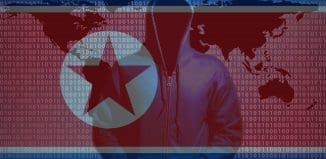Lockheed Martin to Investigate Cyber Crime for US DoD
This post is also available in:  עברית (Hebrew)
עברית (Hebrew)
Lockheed Martin will support the US Department of Defense’s efforts against cyber criminals under a new contract. The company will continue its role as the prime contractor for the Defense Cyber Crime Center (DC3), delivering a range of technical, functional and managerial support.
Under the $347 million, five-year contract (one base year plus four one-year options), awarded by the General Services Administration (GSA) Federal Systems Integration and Management Center (FEDSIM), Lockheed Martin will provide vital assistance in the investigation of criminal and counterintelligence matters, according to prnewswire.com.
“The cyber threats facing the Department of Defense and our nation are growing in complexity and frequency,” said Deon Viergutz, vice president, Cyber Solutions, Lockheed Martin. “Our cybersecurity threat intelligence expertise and technology speed the response needed to safeguard information in this constantly evolving environment.”
Lockheed Martin has served as the DC3 prime contractor since 2012, providing digital and multimedia forensics examination, analysis, development, test and evaluation, information technology, and cyber analytical services, as well as critical cyber intelligence to Defense Industrial Base partners.
The contract includes comprehensive services for the DC3 mission including leadership and staffing for the DoD Collaborative Information Sharing Environment (DCISE), the Defense Computer Forensics Laboratory (DCFL), the Defense Cyber Crime Institute (DCCI), and the Defense Cyber Crime Center–Analytical Group (DC3-AG).
Some of the services offered by Lockheed regarding cyber security, according to its website, include the Cyber Kill Chain, which enhances visibility into an attack and enriches an analyst’s understanding of an adversary’s tactics, techniques and procedures.
Another solution, the Intelligence Driven Defense, supports the intent to stop offensive maneuvers during a cyberattack while maintaining a defensive posture. Human interaction is the fuel for cyberthreats, therefore events caused by a human must be resolved by a human. The company harnesses intelligence from the adversary during the threat life cycle and uses it to minimize the impact of an attack. That information is shared across domains to protect against future attempts.






























